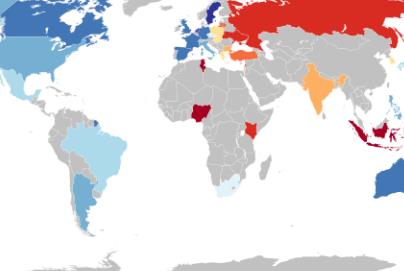Cultural Perspectives on Gay Sexting
Gay sexting, while a modern phenomenon, intersects deeply with cultural attitudes toward both technology and sexuality. This article explores how different cultures perceive gay sexting, the challenges these views present, and the progress being made in various regions.

Cultural Acceptance and Stigma
Varied Acceptance Across Cultures
In liberal societies where LGBTQ+ rights are well-established, such as in Scandinavia and parts of North America, gay sexting is often seen as a normal aspect of dating and relationship building. Surveys in these regions indicate that up to 70% of gay individuals view sexting as a positive and integral part of their romantic and sexual interactions.
However, in more conservative countries where homosexuality may still be criminalized or heavily stigmatized, such as in parts of Africa and the Middle East, gay sexting can carry significant risks. In these regions, not only is the act of sexting perilous, but the digital footprint it leaves could be used as evidence against individuals, with dire legal consequences.
Impact of Cultural Norms on Behavior
Cultural norms significantly impact how individuals approach gay sexting. In East Asian cultures, where privacy and discretion are highly valued, sexting is often practiced with much caution. A study from Japan found that while 50% of gay respondents engage in sexting, most prefer using apps with enhanced privacy features and rarely share identifiable images.
Technological Influence and Access
Digital Divide
Access to technology also plays a crucial role in the prevalence of gay sexting. In developed countries with high internet penetration and access to smartphones, sexting is more common. Conversely, in regions where technology is less accessible, sexting, and its implications, are not as prevalent. For instance, only about 20% of individuals in sub-Saharan Africa report engaging in any form of sexting, largely due to limited internet access.
Safeguarding Privacy and Security
Given the cultural risks associated with gay sexting, many turn to technology to safeguard their privacy. The use of encrypted messaging apps and digital security measures is significantly higher among LGBTQ+ communities in restrictive countries. About 60% of gay individuals in such regions use encryption regularly, compared to 30% in more liberal countries.
Educational Efforts and Advocacy
Promoting Safe Practices
There is a growing movement towards educating the gay community about safe sexting practices, especially in culturally restrictive environments. Non-governmental organizations and LGBTQ+ advocacy groups are at the forefront, providing resources and training on how to engage in sexting safely and responsibly.
Legal and Social Change
Activists are also working to change laws and social perceptions that negatively impact gay individuals in conservative societies. Progress is slow but ongoing, with legal reforms and public awareness campaigns gradually reshaping how gay sexting is viewed and managed.
Conclusion
Cultural perspectives on gay sexting vary widely across the globe, influenced by societal norms, legal frameworks, and access to technology. While some regions embrace it as part of modern sexuality, others view it through a lens of stigma and risk. The challenge lies in navigating these complex cultural landscapes while advocating for greater acceptance and safer practices. For a deeper understanding of navigating these challenges, visit gay sexting to explore further.
